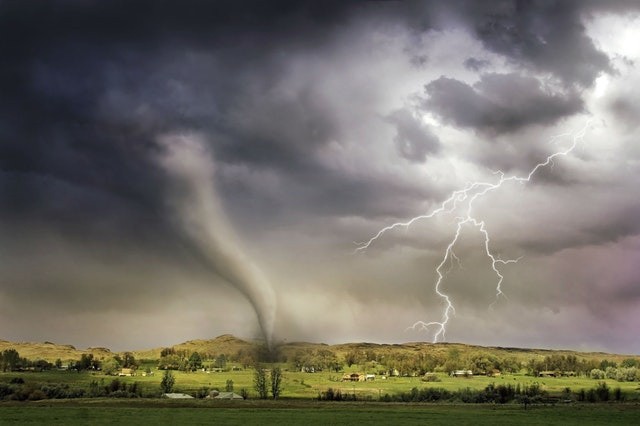On April 4, Aaron Jayjack created a special time-lapse film of a tornado in Pleasantville, Iowa, using a 360-degree camera.
A big, destructive rope tornado that tore through Pleasantville, Iowa, some 35 miles southeast of Des Moines, was seen on film during Tuesday's storms.
Teaser clip from the 360 footage of the Pleasantville, IA tornado. Full video on YouTube! #iawx https://t.co/1x8fng7XnQ pic.twitter.com/0FSW5gbzhc
— Aaron Jayjack (@aaronjayjack) April 5, 2023
According to USA Today, Jayjack can be heard screaming in the video as the tornado tears over an open field, churning up dust and debris, "Oh my god, it's violent!"
Tornado Outbreak
On Wednesday, April 5, nearly a dozen tornadoes were reported.
As storms move eastward, severe weather could last into Wednesday night.
The tornado appeared to cross the road in front of Jayjack at one point, and as it crossed power wires, a spark of electricity could be seen through the rubble, according to AccuWeather.
Storm Chasing
A person who chases storms is called a storm chaser or just a chaser.
Storm chasing is broadly described as the intentional pursuit of any extreme weather phenomena, independent of motivation, but most frequently for curiosity, adventure, scientific research, or news or media coverage.
While most chasers' main goal is to observe a tornado, many track thunderstorms and enjoy observing cumulonimbus and similar cloud forms, seeing a hailstorm and lightning strike, and taking in the changing skyscapes.
Thrill-Seeking Activity

Storm chasing is mostly a recreational activity, and chasers typically state that they are doing it to take pictures of or record videos of storms and for various personal reasons.
These can include intangible experiences like feeling a part of a much larger and more powerful natural world, the challenge of accurate forecasting and intercepting storms from the best vantage points, and pure thrill-seeking.
They can also include the beauty of the views provided by the sky and land, the mystery of not knowing precisely what will unfold, the journey to an undetermined destination on the open road, and the mystery of not knowing exactly what will happen.
Although direct participation in scientific study is occasionally listed as a goal, this is nearly never feasible during the pursuit, except for chasers working together on a formal university or government project.
Storm Spotters
Many storm chasers also serve as storm spotters, informing the appropriate authorities of their observations of dangerous weather.
These reports considerably enhance the accuracy of severe storm databases used in climatology and other studies, which benefits real-time warnings with ground truth data and science, which then ultimately boosts forecast and warning skills.
In addition, many amateur chasers provide images and videos to researchers and the US.
For spotter training, use the National Weather Service (NWS).
Using it for Media
Except for broadcast media crews in certain television market areas, video stringers and photographers (mainly freelancers, but some staff), and researchers like graduate meteorologists and lecturers, storm chasers are not typically compensated for doing so.
More people are selling their storm photos and videos for a profit.
Storm chasing is now a limited form of tourism because only a select few offer "chase tour" services.
Given the costs of chasing, financial returns are typically minimal, with most chasers spending more than they earn and very few making a livelihood exclusively from chasing.
Chasers are typically constrained by the local spring and/or summer length when violent storms are most likely to form.
Related Article : Exposure to Major Disasters Can Cause Long-Term Mental Health Problems
For more climate and weather updates, don't forget to follow Nature World News!
© 2025 NatureWorldNews.com All rights reserved. Do not reproduce without permission.





